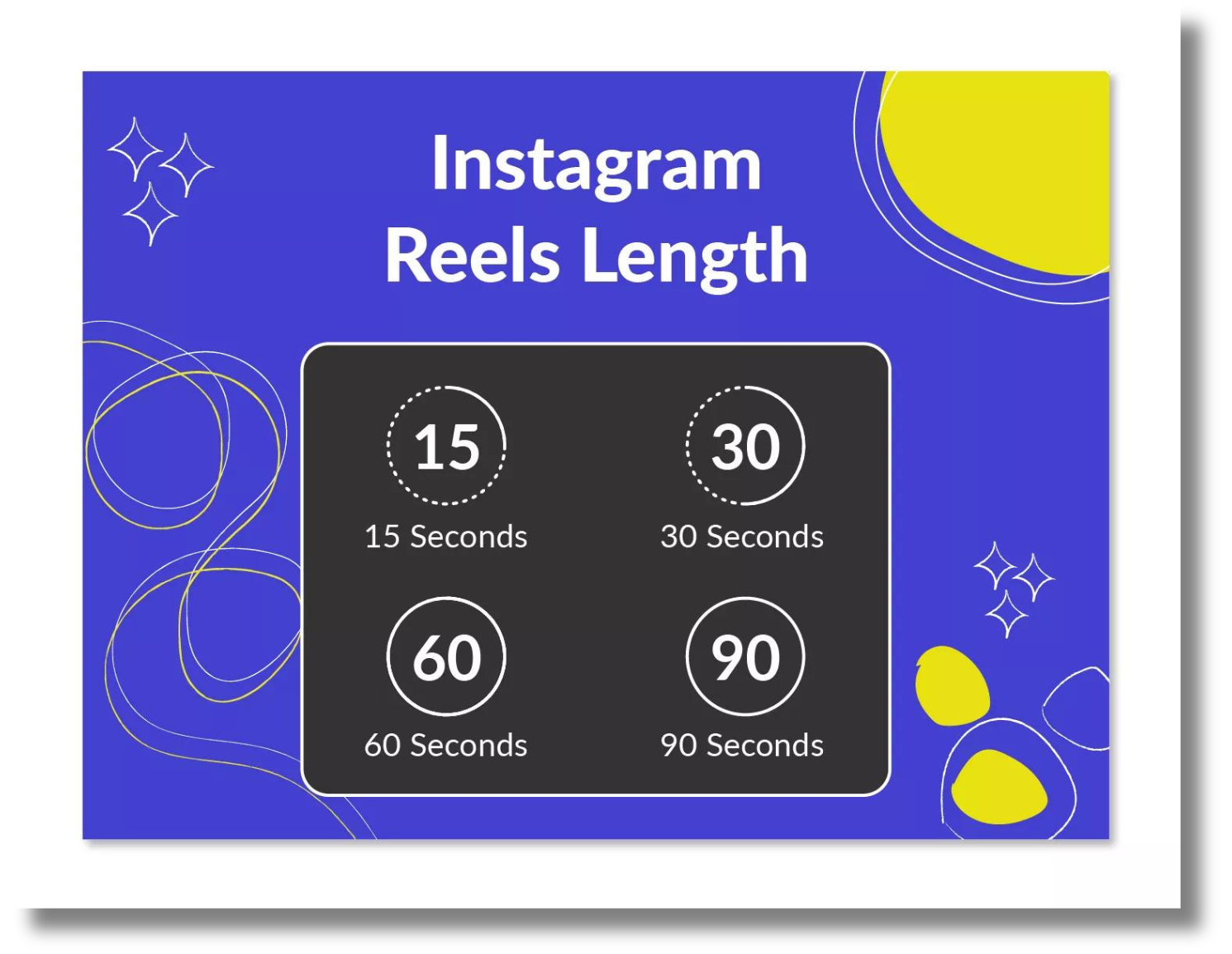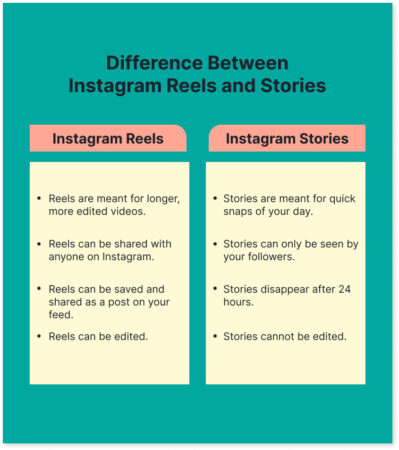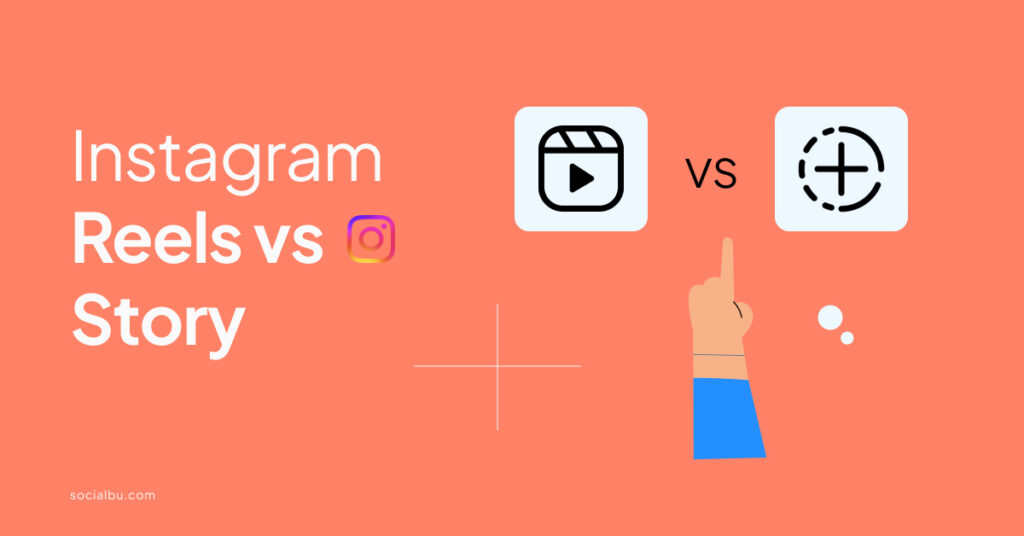Instagram Reels vs Stories, which one tends to bring more results? This is a pressing question that is likely to pop into your mind considering the ever-evolving landscape of content creation on Instagram.
Instagram story reels have taken the platform by storm ever since they were launched in 2020. However, Instagram stories and posts remain evergreen.
Let’s end the reel vs story vs post debate once and for all today. This blog post will help you understand the key differences between Instagram Reels and Stories.
Differences Between Instagram Reels vs Stories
Instagram Reels and Stories are both prominent features that have transformed the way users engage and share content on the platform. While both offer creative opportunities for visual storytelling, they possess distinct characteristics, purposes, and functionalities.
The following list highlights the key differences between Instagram Reels and Stories to help you craft a tailored content strategy for Instagram success:
1.Duration and Format

Reels: Instagram Reels allow users to create short-form videos of up to 60 seconds, incorporating various editing tools like trending audios, effects, and speed adjustments.
These videos are typically more polished and structured. If you compare impressions for Reel vs post on Instagram, Reels will win.
Stories: Instagram Stories, on the other hand, offer a format for sharing moments through a series of images or short videos that disappear after 24 hours. Stories are usually more spontaneous and casual, lasting up to 15 seconds per individual clip.
2.Purpose and Content Creation

Reels: Reels are designed for users to create entertaining and engaging video content, often focusing on trends, challenges, tutorials, or creative storytelling.
They provide an opportunity for users to showcase their creativity through well-edited, visually appealing videos. You can even unleash your creativity with a green screen setup to shoot Reels.
Stories: Stories are meant for sharing everyday moments, glimpses into daily life, behind-the-scenes content, or quick updates. They’re ideal for more casual, in-the-moment interactions with your audience.
3.Audience Engagement and Interaction

Reels: No wonder, Reels encourage engagement through features like comments, likes, shares, and the option to remix or duet with other Reels. Viewers can interact by engaging with the content or using audio or effects from the Reel.
Stories: On the other hand, Stories also allow for interaction through reactions, replies via direct messages, polls, quizzes, and the “Ask Me Anything” feature. They foster direct communication between the creator and the audience.
4.Reach and Visibility

Reels: For reach, Reels have a dedicated space on Instagram’s Explore page, potentially enhancing discoverability and reaching a wider audience beyond the creator’s followers. The algorithm may boost Reels that receive more engagement.
Stories: When talking about visibility, Stories appear at the top of the Instagram feed, offering immediate visibility to followers. However, they’re primarily viewed by the creator’s existing audience unless shared publicly.
5.Brand Marketing and Strategy

Reels: Brands utilize Reels to showcase products, launch campaigns, entertain audiences, and leverage trending content to reach and engage with a wider audience in a more creative and dynamic format.
Stories: Often used by brands for real-time updates, Stories are used to share exclusive content, conducting polls or Q&A sessions, or providing a sneak peek into upcoming launches or events
6.Analytics and Measurement

Reels: Instagram provides insights such as plays, likes, comments, shares, and saves for Reels, allowing creators to track performance metrics and understand audience engagement.
Stories: Story Insights include metrics like views, taps forward or backward, replies, and interactions, helping creators gauge the effectiveness of their content.
Ways to Leverage Instagram Reels vs Stories For Growth
Understanding the key differences between Instagram Stories and Reels can help content creators and businesses tailor their content strategies effectively to increase followers and brand awareness. Businesses and creators can leverage each one of these features to gain more impressions by fostering engagement.

Instagram Reels, with its short-form video format, offers businesses a creative canvas to capture attention and engage audiences effectively through the following ways:
Product Showcases and Demonstrations
Use Reels to showcase products in action, highlight key features, and demonstrate their utility or benefits in a visually compelling way.
Trend Utilization and Challenges
Join popular trends and challenges relevant to your brand niche or industry. Participating in trending challenges and using new Instagram filters can boost visibility and attract a wider audience.
Behind-the-Scenes Glimpses
Offer behind-the-scenes looks into your brand’s culture, manufacturing process, or team dynamics. This will humanize your business and build a stronger connection with your audience.
Educational and How-To Content
Create informative and educational Reels that provide quick tips, tutorials, or DIY guides related to your products or services.
Influencer Collaborations
Collaborate with influencers or creators to amplify your brand’s reach. Partnering with influencers to create engaging Reels can introduce your brand to new audiences.
On the other hand, Instagram Stories enable businesses to engage with their audience in real-time and drive meaningful interactions. Here’s how Stories can be leveraged effectively:
Product Teasers and Exclusive Offers
Use Stories to tease upcoming product launches, and share exclusive offers, discounts, or limited-time promotions to create a sense of urgency among your audience.
Polls, Quizzes, and Questions
Engage your audience by conducting polls, quizzes, or questions about your products or services. Encourage participation and gather valuable insights directly from your audience. Brainstorm interesting Instagram Story ideas to boost engagement.
Story Highlights for Brand Storytelling
Curate and organize your Stories into Highlights, categorizing them based on themes or product categories. This allows audiences to explore and engage with your brand’s story at their convenience.
Customer Testimonials and User-Generated Content (UGC)
Share customer testimonials or repost user-generated content and branded GIFs through Stories. Featuring real experiences and testimonials adds authenticity to your brand.
Event Coverage and Announcements
Whether it’s a virtual event or an in-person gathering, use Stories to provide live coverage, event highlights, and important announcements to keep your audience informed. You can even share links and glimpses of your day-to-day life with your followers.
Conclusion
Incorporating Instagram Reels and Stories into your marketing strategy provides an opportunity to create engaging, visual content that resonates with your audience on a more personal level. However, the choice between Instagram Reels vs Stories isn’t about one format being superior to the other; rather, it’s about understanding their unique strengths and strategically integrating them into your content marketing strategy.
Nonetheless, Reels excel in crafting polished, engaging content perfect to appear on the Instagram feed, while Stories offer a more spontaneous, interactive platform for real-time engagement. Determining when to use Instagram Stories and Instagram Reels depends on the content’s purpose, target audience, and desired engagement level.
FAQs
How do Instagram Stories differ from Reels in terms of content creation?
Reels are designed for creating short-form, entertaining videos with advanced editing tools like music, effects, and speed adjustments. Whereas, Stories are ideal for sharing everyday moments, behind-the-scenes content, or quick updates.
Which format provides better reach and visibility: Reels or Stories?
Instagram Reels have a dedicated space on the Explore page, potentially increasing their discoverability and reaching a wider audience beyond the creator’s followers. On the other hand, Stories are prominently displayed at the top of the Instagram feed, offering immediate visibility to followers. However, their reach is primarily among the creator’s existing audience unless shared publicly.
How do Reels and Stories engage the audience differently?
Instagram story reels engage the audience through comments, likes, shares, and the option to remix or duet with other Reels. Viewers can interact with content or use audio or effects from the Reel. On the contrary, Stories encourage interaction through reactions, replies via direct messages, polls, quizzes, and the “Ask Me Anything” feature, fostering direct communication between the creator and audience.
How frequently should Reels and Stories be posted for optimal engagement?
The ideal posting frequency for Reels and Stories varies based on audience preferences and content strategy. However, consistency is key. Posting high-quality content consistently while avoiding overposting is crucial to maintaining audience interest.
What types of content perform best on Instagram Reels vs Stories?
Content that performs well on Reels includes trending challenges, creative storytelling, tutorials, and visually appealing, entertaining videos. Whereas, on Stories, behind-the-scenes content, quick updates, polls, Q&A sessions, and spontaneous moments often resonate better with audiences due to their interactive nature.








